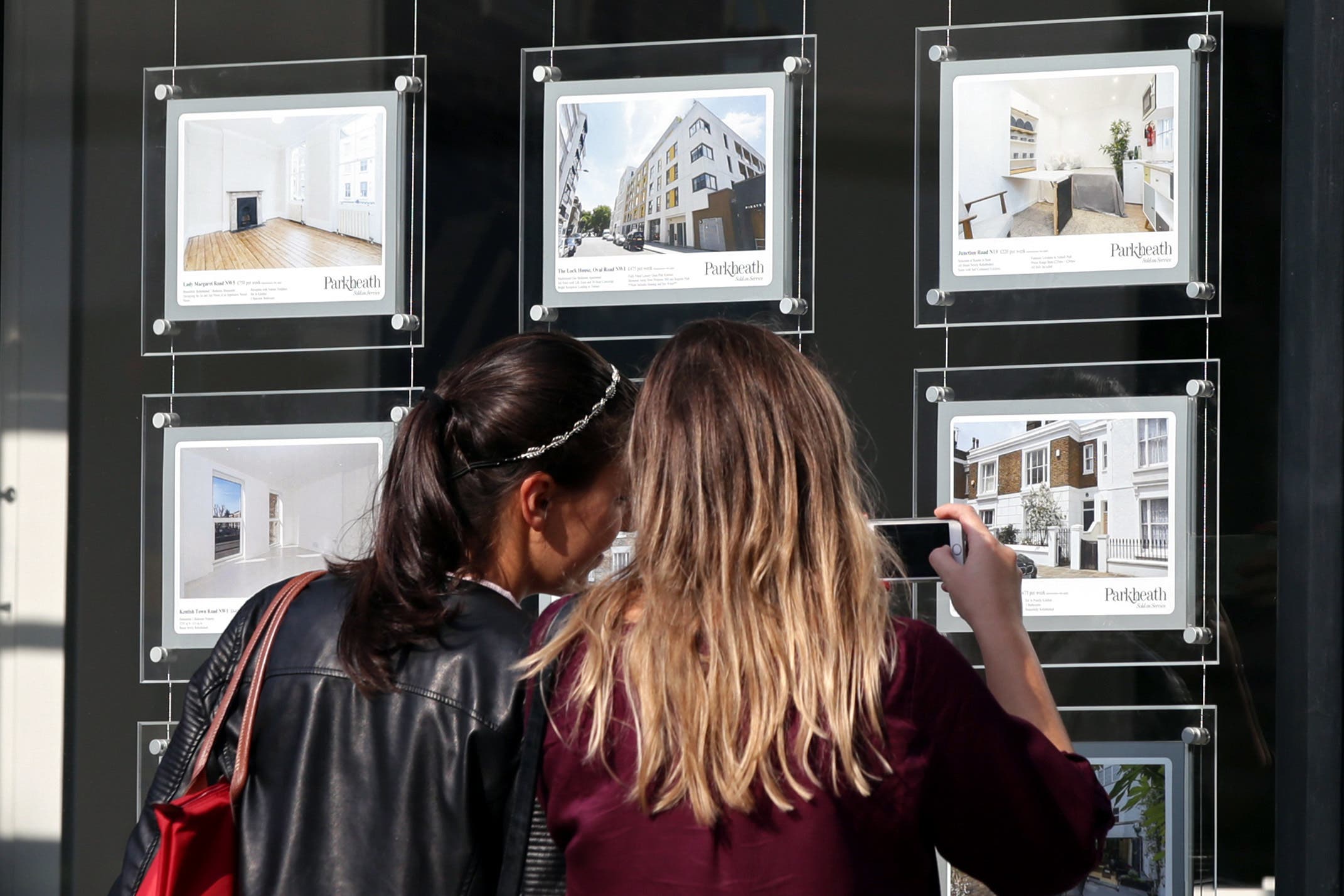House prices rise for the first time in six months, say Halifax - but are still lower than a year ago
A lack of supply has strengthened prices in the short-term, mortgage providers said

Your support helps us to tell the story
From reproductive rights to climate change to Big Tech, The Independent is on the ground when the story is developing. Whether it's investigating the financials of Elon Musk's pro-Trump PAC or producing our latest documentary, 'The A Word', which shines a light on the American women fighting for reproductive rights, we know how important it is to parse out the facts from the messaging.
At such a critical moment in US history, we need reporters on the ground. Your donation allows us to keep sending journalists to speak to both sides of the story.
The Independent is trusted by Americans across the entire political spectrum. And unlike many other quality news outlets, we choose not to lock Americans out of our reporting and analysis with paywalls. We believe quality journalism should be available to everyone, paid for by those who can afford it.
Your support makes all the difference.Average UK house prices rose in October for the first time time in six months but still remain lower than a year ago, according to Halifax.
The UK’s largest mortgage lender said that house prices jumped by 1.1 per cent in October, compared to a fall of 0.3 per cent in September. A low supply of homes for sale is likely to have strengthened prices in the short term, the bank added.
Despite the modest rise, house prices were still lower than a year earlier and Halifax does not expect to see an overall growth in house prices until 2025.
The typical UK home was valued at £281,974 in October, up by about £3,000 on the previous month. In September, the average UK house price was £278,985. However, the average house price was 3.2% lower in October than a year earlier.
Kim Kinnaird, director, Halifax Mortgages, said: “UK house prices rose in October, up 1.1% on a monthly basis, breaking a run of six consecutive monthly falls.”
She added: “Prospective sellers appear to be taking a cautious attitude, leading to a low supply of homes for sale. This is likely to have strengthened prices in the short-term, rather than prices being driven by buyer demand, which remains weak overall.
“While many people will have seen their income grow through wage rises, higher interest rates and wider affordability pressures continue to be challenges for buyers.
“Across the medium term, with financial markets not anticipating a decline in the Bank of England’s base rate soon, we expect house prices to fall further overall – with a return to growth from 2025.
“The current picture should continue to be seen in the context of the longer-term house price trend as, on average, prices remain around £40,000 above pre-pandemic levels.”
Halifax said that against a backdrop of rising rents, the first-time buyer market has held up well, as the data showed that prices are down by 2.4 per cent annually for first time buyers - a smaller fall than overall market at 3.2 per cent.
Halifax’s findings are similar to those of Nationwide Building Society, which reported last week that house prices rose by 0.9% on average month-on-month in October. The society said last week that this likely reflected a constrained supply of properties for buyers to choose from.
The Halifax report showed that annual price falls in October ranged from 6.0% in the South East of England, where house prices are often higher than in many other parts of the UK, to just 0.2% in Scotland.
Stephen Perkins, managing director at Norwich-based broker Yellow Brick Mortgages, said: “After last week’s Nationwide house price curveball, we’ve got another.
“The lack of supply is certainly pivotal to these upticks in house prices but demand is also picking up as more and more buyers sense a bargain. First-time buyers, in particular, are in a strong position and know that they hold a lot of bargaining power at present.”
Myron Jobson, senior personal finance analyst at interactive investor, said: “Buying a house in today’s market remains difficult.
“The new status quo of higher mortgage rates means that sellers might need to be flexible on price, while prospective buyers should ensure that they don’t bite off more they can chew financially to land a property.
“But there are green shoots of hope for would-be buyers. Wage growth now outpaces inflation, while home prices and mortgages rates are tipped to wane further. Over time, that combination should improve affordability for potential buyers – but there are no guarantees.”
Tom Bill, head of UK residential research at estate agent Knight Frank, said: “Thin trading means monthly price movements should be handled with care but price falls have been kept in check by the hesitancy of both buyers and sellers.
“It means this slowdown has been a story of weak sales volumes, not fast-declining prices. House prices will continue to come under pressure but we think they will bottom out in 2024.
“We expect a decline of 7% this year and 4% next year as inflation comes under control and mortgage rates stabilise.”
Average house prices in October followed by the annual price change, according to Halifax:
East Midlands, £231,455, minus 5.3 per cent
Eastern England, £322,451, minus 5.3 per cent
London, £524,057, minus 4.6 per cent
North East, £166,216, minus 3.3 per cent
North West, £221,897, minus 3.0 per cent
Northern Ireland, £183,922, minus 0.5 per cent
Scotland, £202,608, minus 0.2 per cent
South East, £374,066, minus 6.0 per cent
South West, £292,187, minus 5.7 per cent
Wales, £213,125, minus 3.9 per cent
West Midlands, £245,006. minus 3.4 per cent
Yorkshire and the Humber, £200,321, minus 3.6 per cent
Additional reporting by PA